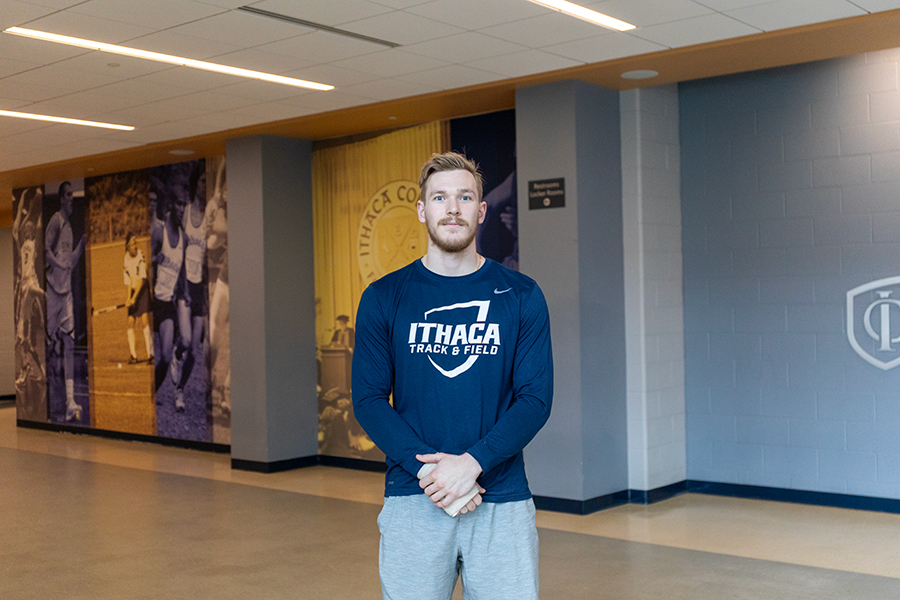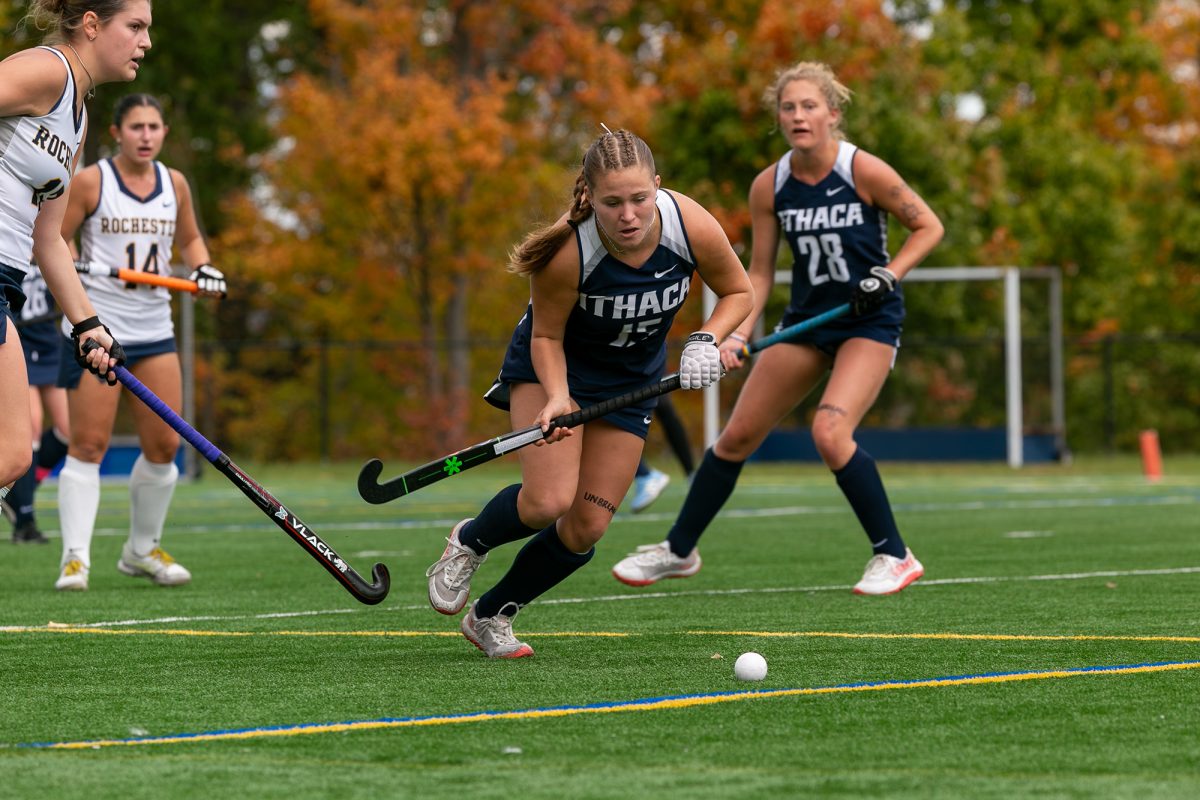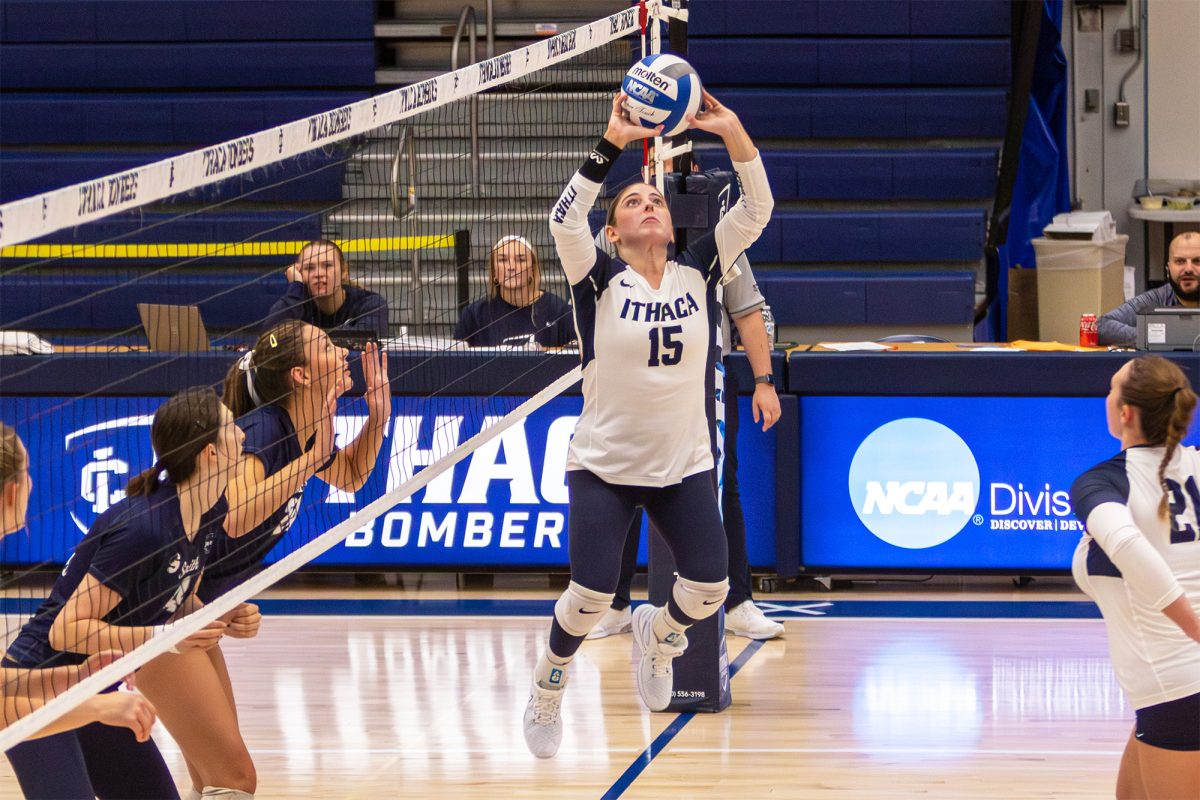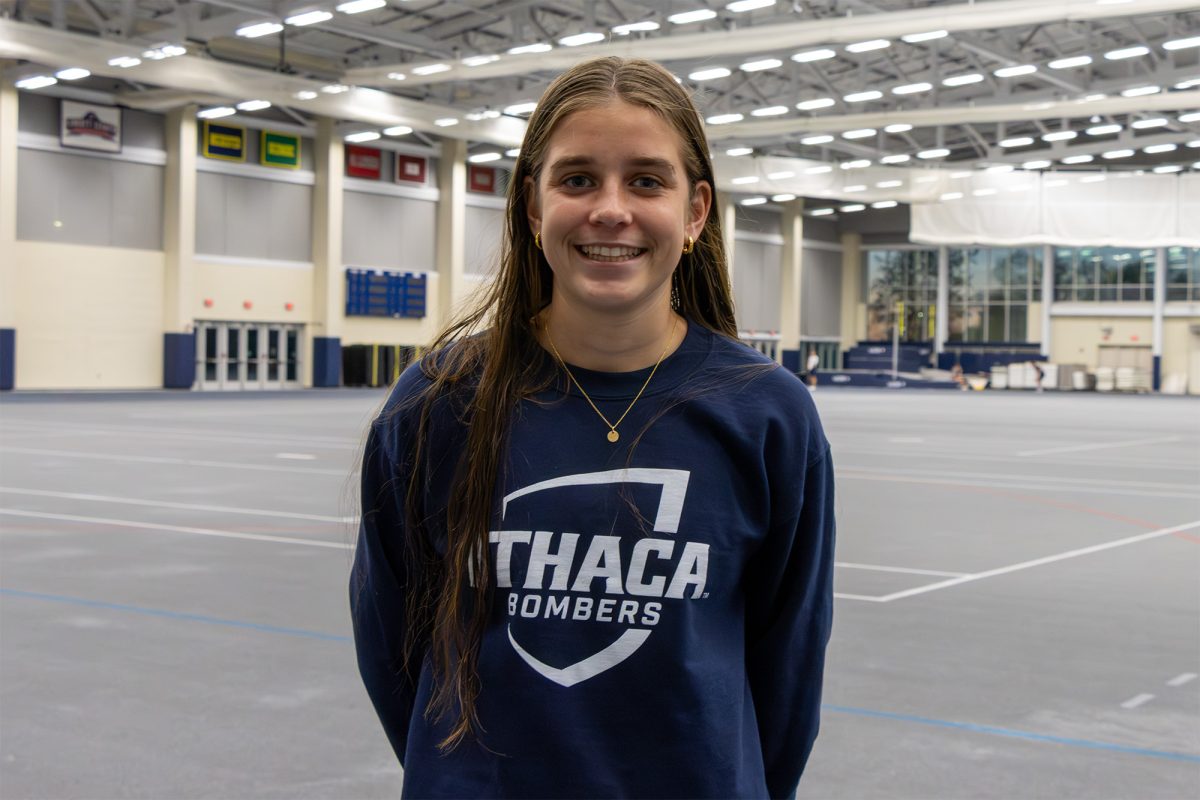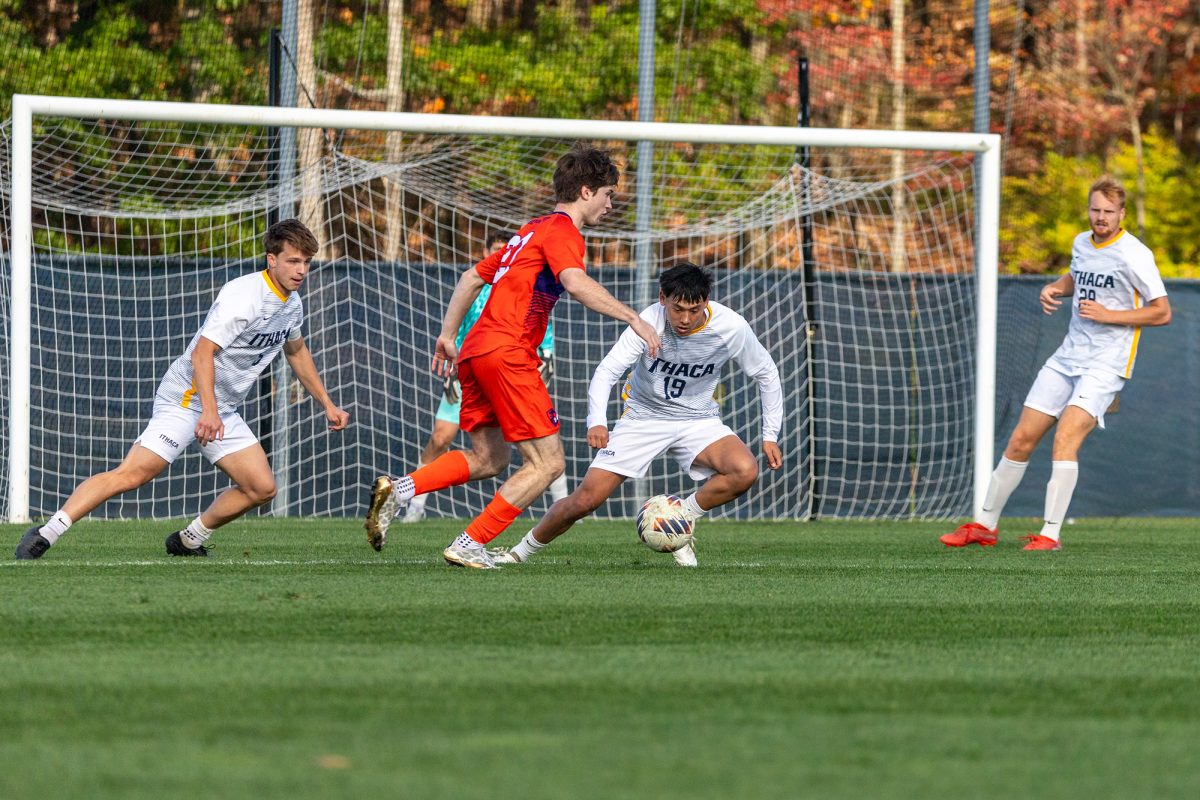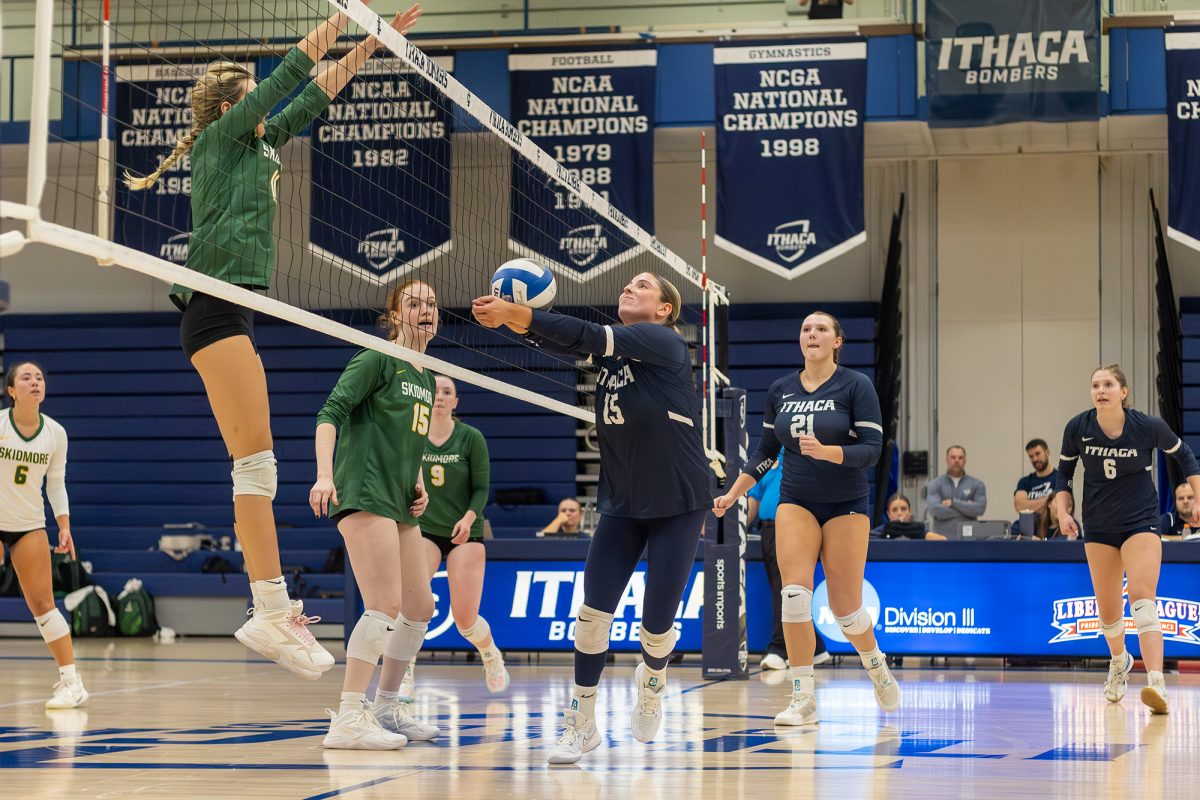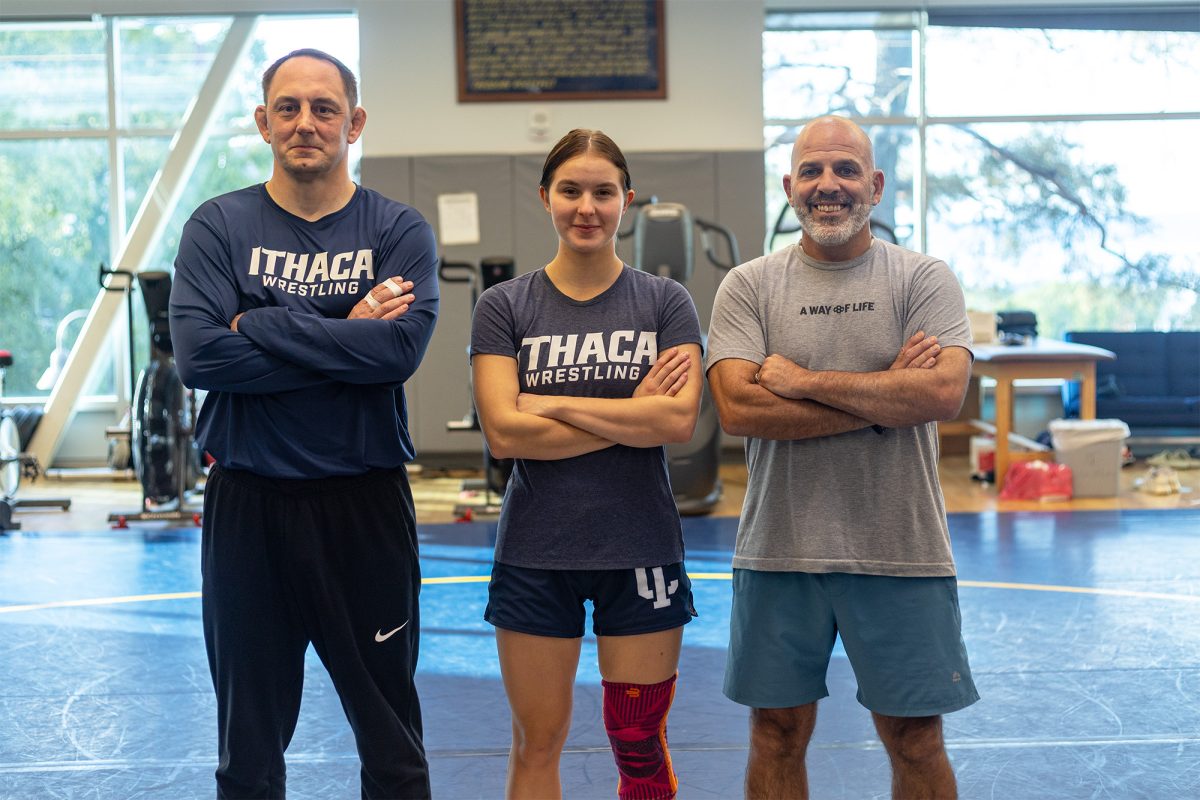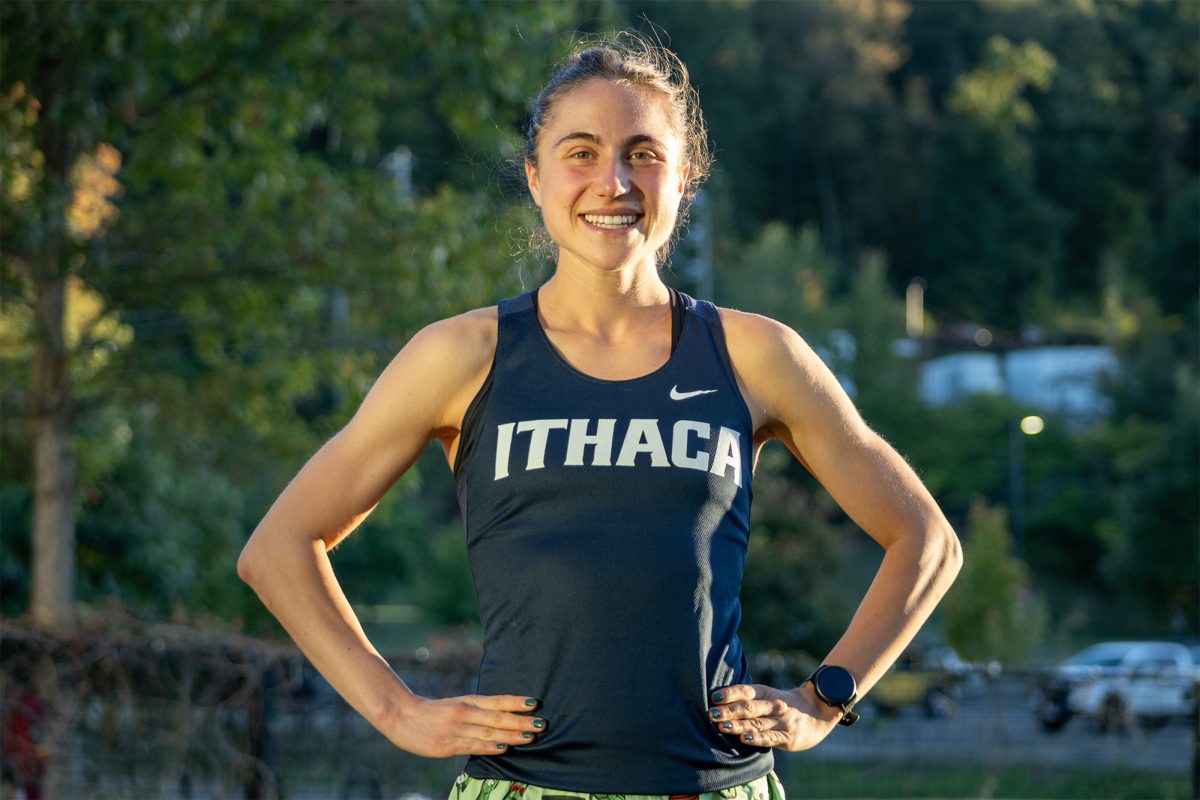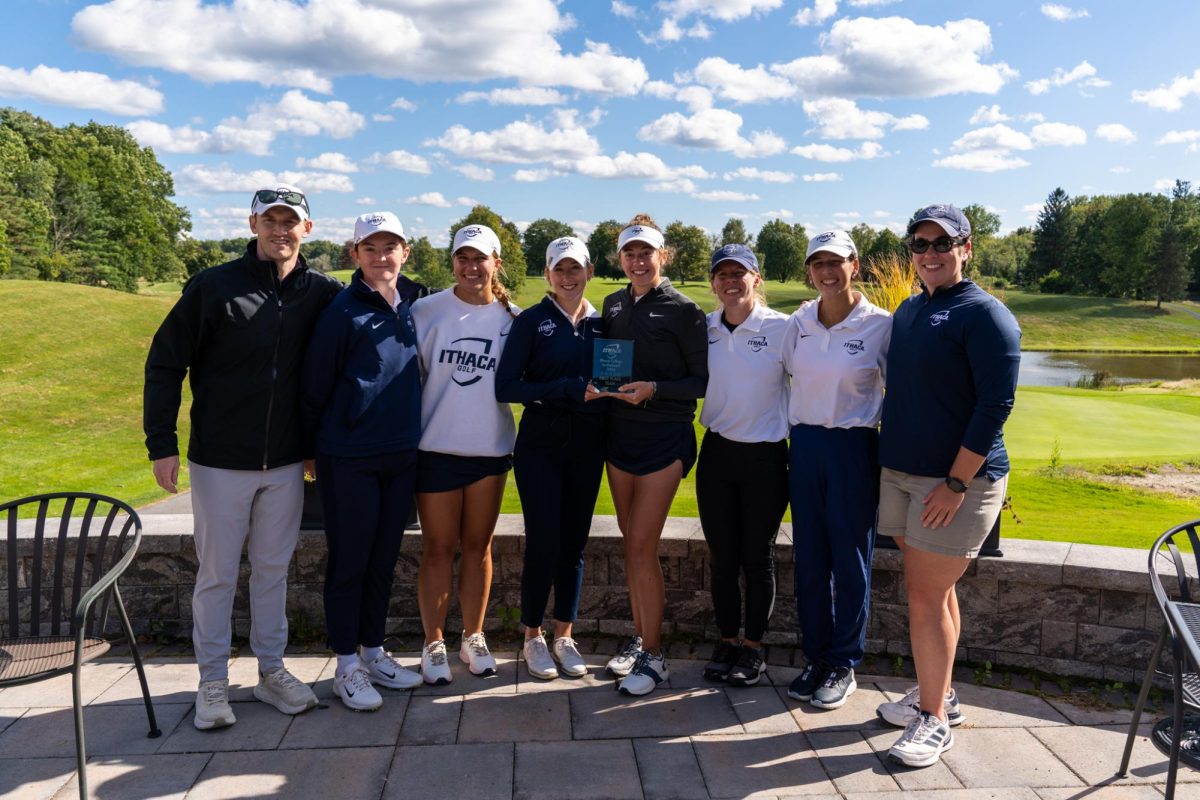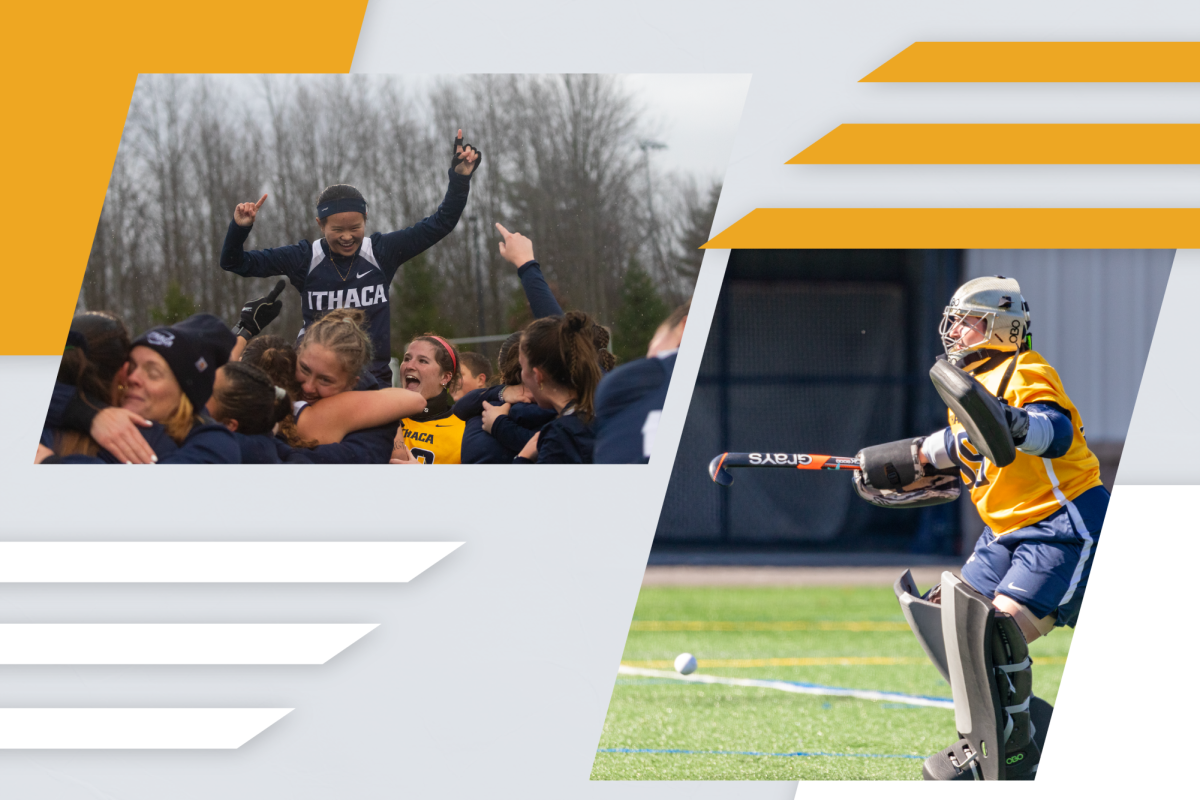As the Ithaca College men’s track and field team transitions into its outdoor season, there is one pole vaulter that stands out from the rest: senior Brendan Sheehan.
During the indoor season, Sheehan competed in pole vaulting with a broken hand and still qualified for the 2024 NCAA Indoor Championships. In addition, Sheehan earned Liberty League Performer of the Week honors four times and secured a spot on the Liberty League second team for his achievements in pole vaulting.
Sheehan said his injury was a stress fracture to the hook of the hamate bone. The injury is caused from overuse and constant tension forces that come from split grip whether it be from pole vaulting, golf, baseball, etc. Sheehan said his injury got so serious that at one point the hamate bone broke completely off his hand.
“This is, like, a very common injury in baseball players actually,” Sheehan said. “They’re gripping the bat a whole lot. All of that force from putting the ball and that repetitive thing over, and over and over on the hand just causes this little piece of the bone to basically start to fracture. Just like you would see in really bad shin splints, or something else. That’s basically what ended up happening, and it got to the point where it had actually broken completely off, so it was just floating around in my hand for a little bit.”
Pole vault coach Matt Scheffler, who is in his 18th year with the college, said he has never seen this type of injury in his time coaching pole vaulting.
“I mean, I’ve coached, I don’t even know how many vaulters at every level at this point,” Scheffler said. “This is the first.”
Sheehan said he began to notice the injury as the indoor season went on, but it didn’t start to get as serious until playoffs began.
“So, for the majority of the indoor season, I would say, it wasn’t, like,terrible, unbearable pain or anything,” Sheehan said. “It just kept being there and was enough to where it was definitely a big nuisance while I was actually jumping, competing and everything. And then as we got close to the postseason, it started to just get worse and worse.”
Sheehan said that the injury itself was hard to diagnose and that it could not have been caught any earlier. He worked with the team’s athletic trainer, Natalie Sharpe, and others to manage the injury at the start before going to Dr. Andrew Getzin, the team’s doctor, to get X-rays.
After getting X-rays, Sheehan said he went to Columbia Orthopedics on March 22 to receive surgery. Sheehan said he still has movement in all of his fingers, but is still waiting on getting more strength and mobility back before competing in pole vaulting. He said he plans to start competing in long jump soon and considers that as a fail-safe option for the NCAA Outdoor Championships that begin May 23.
As of now, Sheehan said doesn’t know when he will compete in pole vaulting.
“As soon as I am able to get cleared from the doctors and our staff here on campus to get back to jump,” Sheehan said. “I plan on being back right away.”
On top of getting rehabilitation and the support he needed for the injury, Sheehan is also completing his senior capstone as a strength and conditioning intern at Hobart and William Smith Colleges in Geneva, New York. Sheehan works across the 30 different athletic teams at Hobart and William Smith Colleges, and participates with the Bombers when the team has its scheduled practices. Sheehan said most of his days consist of the same things: work, train, eat, sleep.
“I’m probably there 20 to 40 hours a week, depending on the week, what’s going on and everything — and it’s just simple,” Sheehan said. “I’m up at 3 to 4 in the morning, driving up there every single day, and then coach all day [and] train in the afternoons. Come back, eat dinner, go to sleep. Basically not a whole lot else besides that. That’s basically what my schedule has been for the past two and a half months.”
Sheehan said he is dedicated to both fields, and that is why he doesn’t get burnt out.
“I’m lucky I enjoy what I do off both, so I always enjoy being up there [Hobart and William Smith Colleges],” Sheehan said. “And just avoiding burnout is just, like, being dedicated to it, just like you know what you need to do, and you know and are able to just set your boundaries. ‘This is the time I have this day,’ and ‘Where do I allocate that amount of time?’ And just being very disciplined with it, like that’s what it comes down to.”
During the indoor season, graduate student pole vaulter Dominic Mikula said he and his teammates encouraged Sheehan to make sure he was taking the necessary steps to get the support he needed.
“We just wanted to make sure we encouraged him to do the right thing that was best for him. If that was, you know, taking off or competing, we want to make sure that he’s healthy in the long term,” Mikula said. “But, after he was talking to a couple of doctors and athletic trainer staff, they said it couldn’t get worse. So we’re like, ‘Alright, game on and let’s just keep encouraging him to get through the rest of the season. Try to get him the nationals and kind of go from there.’”
Of the men’s track and field team’s 42 members, 30 are underclassmen. Mikula said Sheehan’s resilience was a motivating factor for those young members to persevere.
“We have a really, really young team. So, a majority of our team is either first-years or sophomores,” Mikula said. “I think he was pretty motivating for those young guys to see that, you know, if you’re able to compete, go and compete, and kind of see what happens. But obviously, we’re trying to preach that you need to do it at the right times, and sometimes it’s not worth it.”
Scheffler said Sheehan sets a good example on pushing the limits.
“It’s a good example of ‘You can still do things even when you’re not at 100%,’” Scheffler said. “Him continuing to train, continuing to go to the meets, to score points for the team, and then making it to Nationals and going down and competing there as well, it’s just a testament that you can do a lot more than your body or mind thinks that it can a lot of times. So it’s just a good example of persistence and dedication and working through things sometimes.”
Sheehan related this injury to life outside of the track course. Sheehan said that in moments like these, the best thing a person can do is keep their head up.
“Just dealing with it, just like sh–t comes at you, and just taking it and just not getting upset about it because you can’t control it at a certain point,” Sheehan said. “It’s just knowing how to take those punches and just keep rolling with it, and just keeping your head up and pushing forward.”


